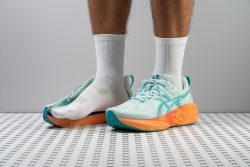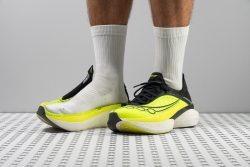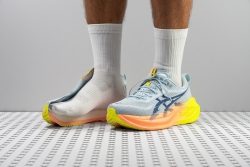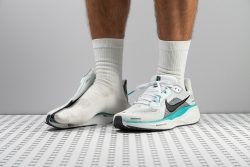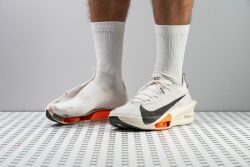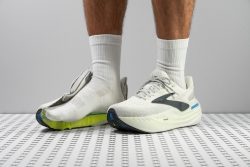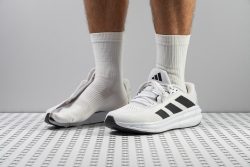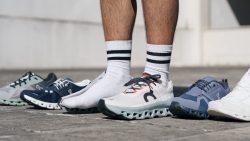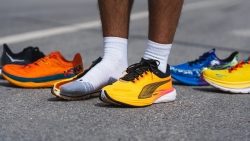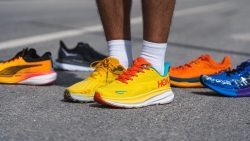7 Best Running Shoes For Underpronation in 2025

We buy shoes ourselves. We earn commissions when you buy through us, at no extra cost. Why trust us
Are you underpronating and want the best shoes for your feet? If so, the time is now to look at our best picks in this part of the running shoe world.
We explored and investigated the experience and data behind every shoe. Indeed, the top picks you see here range from the best all-rounders and the race-worthiest to the most cushioned.
How we test running shoes for underpronation
Finding the best neutral running shoes for underpronators looks like this:
- Brands don't send us kicks for free. In other words, we buy all underpronation running shoes with our own money. This way, we remain objective.
- We put these shoes through various tests in our lab. We pump the smoke into them, freeze them, stick a durometer needle into the foam, bend them and twist them, and so on. Thanks to these tests, we end up with 20+ data points for each shoe.
- We run with each pair to discover the shoe's strengths and weaknesses.
- We publish shoe reviews on our website together with our lab data. We also choose the best picks based on our lab tests and field tests.
Best running shoes for underpronation overall
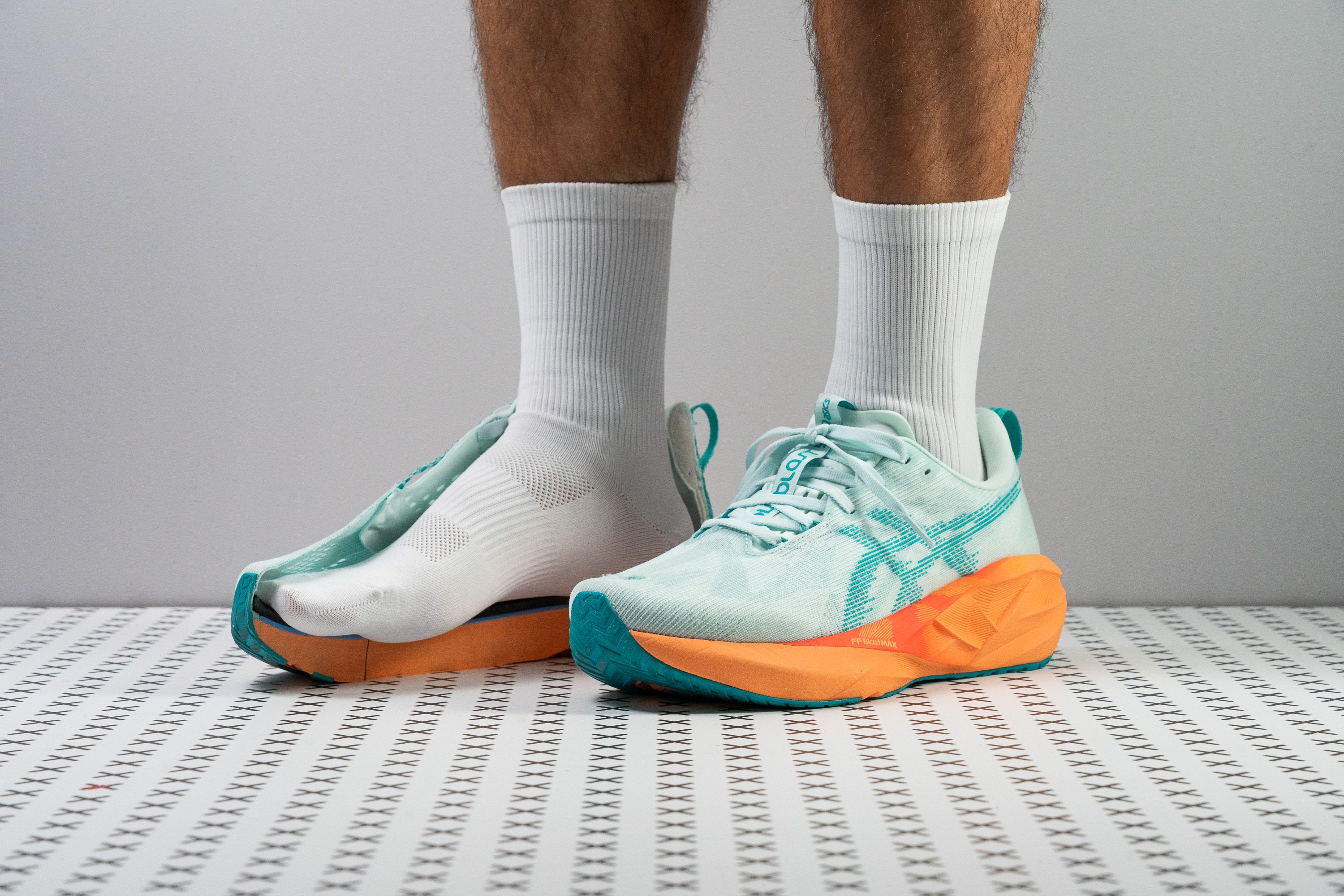





















































What makes it the best?
Novablast 5 stands out in our lab tests and runs, setting the standard of what a versatile trainer should be. Its plush and generous cushioning hits the sweet spot of delightful comfort and its wide base delivers support even at faster speeds. This lightweight sensation easily claims the best overall title among running shoes for underpronation.
Our feet feel spoiled with an uber-soft platform and its monstrous, above-average stack. Our durometer shows the foam is 38.4% softer than average while its stack rises 7.0/8.2 mm higher in the heel and forefoot, respectively. That’s a huge amount of foam to support us underfoot, absorbing much of landing impact and promoting a smooth, bouncy ride.
Despite the higher stack, the shoe is unbelievably light! At 9.0 oz (254g), it’s easier to run in than the 9.4 oz (266g) average of lab-tested shoes. It’s also highly flexible, validated by our bend test when it emerged 32.2% more adaptive than average.
The pair shows minimal wear after long miles—meant for supinators who tend to wear the outer sole first. Our Dremel proves the rubber is more resistant to abrasions as it shows less indentation than average in our test, a promising sign of longevity.
We recommend runners with narrow feet to explore other options since the midsole is significantly wider than average, especially in the forefoot (+8.3 mm).
Pros
- Improved energy return with FF Blast MAX foam
- Plushiest foam in a Novablast yet
- Keeps the same price as v4
- Higher stack height for extra cushioning
- Enhanced flexibility
- Lighter than its predecessor
- Best Novablast ever for wide feet
- Exceptional weight-to-cushion balance
- Works for short, medium and long runs
Cons
- Breathability could be improved
- Toebox durability
Underpronation running shoes with the best energy return
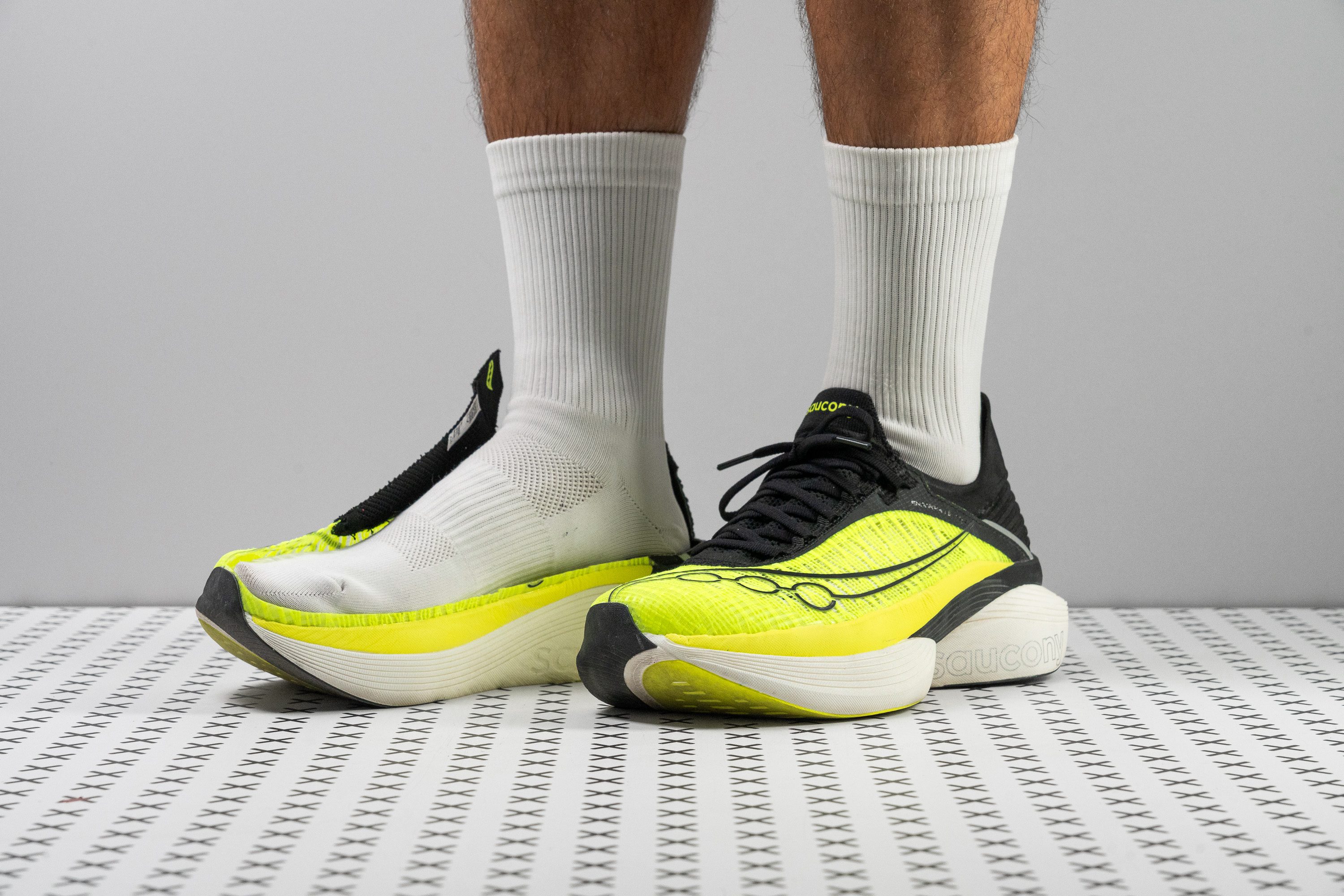















































What makes it the best?
Running in the Saucony Endorphin Elite 2 feels like a dream with its supportive cushion, snappy midsole, and breathable build. We find it to be very accommodating across a wide array of foot strikes and distances, but it shines best in faster paces. With the lab and the streets as our witnesses, EE2 claims the best energy return spot for underpronating runners.
Besides its spoon-shaped carbon plate offering some spring, the IncrediRUN foam itself is highly responsive. It’s the true powerhouse of EE2, outperforming every shoe we tested so far in our energy return test with 80.6% in the heel and 82.1% in the forefoot.
After every stride, a dreamy cushioning awaits. In the lab, we measured high shock absorption scores of 157 SA and 123 SA in the heel and forefoot, respectively, proving its ability to reduce the impact of road running.
EE2 melted away with our feet as we ran, and it never felt like a burden. Our scales confirm a mere 6.9 oz (197g), 25.7% below average. Its highly breathable upper adds to its airiness, scoring the maximum 5/5 rating in our smoke test.
Because its responsiveness is unmatched, so is its price tag. Those who are not willing to spend $275 can opt for a cheaper alternative.
Pros
- Record-breaking energy return
- Ultra-plush foam
- Fantastic shock absorption
- Addictively bouncy and fun feel
- Ideal for the marathon distance
- Durable and breathable upper
- Improved lockdown with knit tongue
- Stack height maxes out the legal limit
- Explosive, forward-driving ride
Cons
- A touch heavy for being an elite supershoe
- Budget-crushing price
- Lateral stability is extremely bad
- Lacks specific support for heel strikers
Underpronation running shoes with the best traction
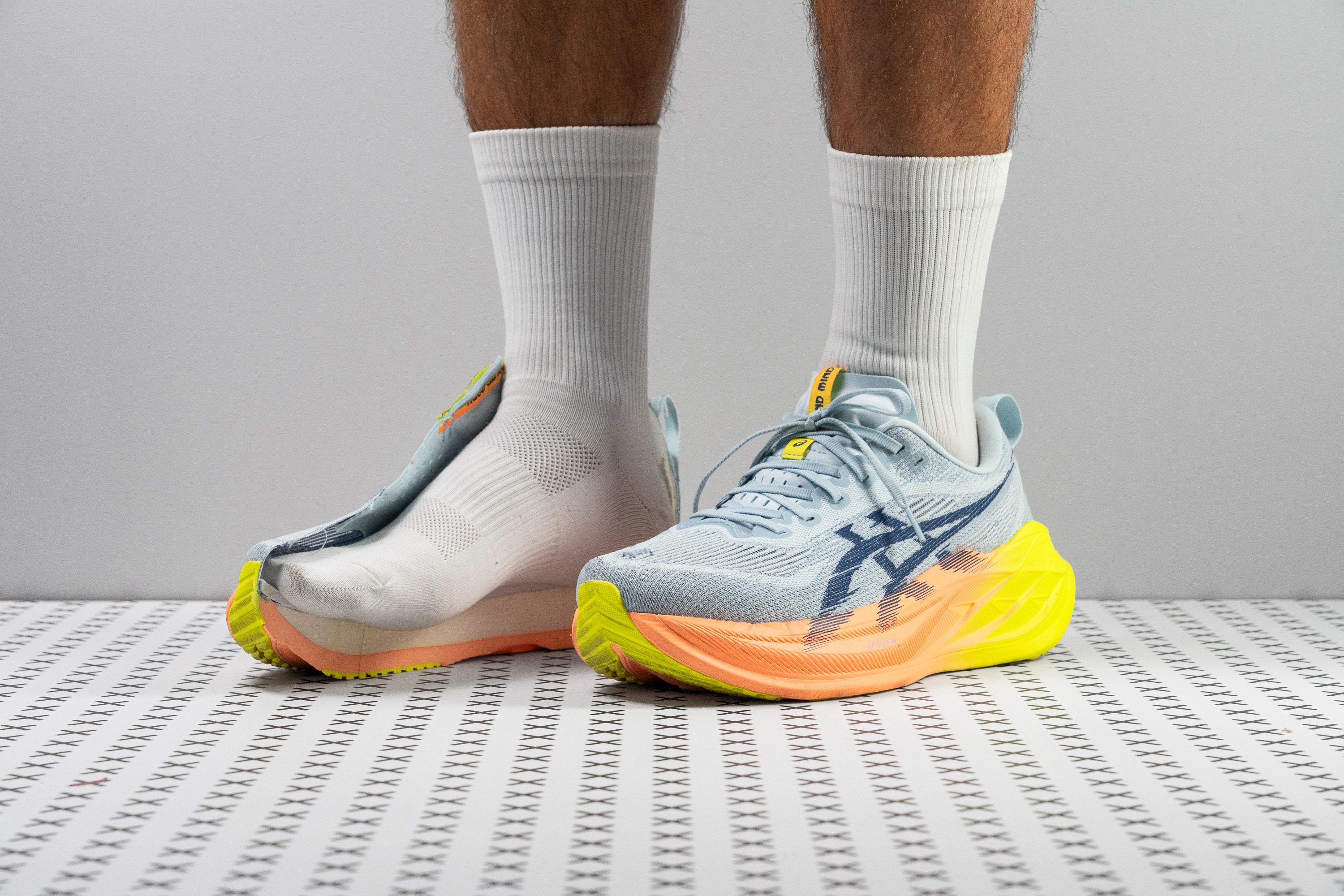

























































What makes it the best?
The ASICS Superblast 2 leaves no room for second thoughts and slips, with its ASICSGRIP outsole offering the best traction among underpronation running shoes. It blends confidence-inspiring grip with reassuring durability and lasting comfort, with its leg-saving cushioning we validated in our lab, all while wrapped in a lightweight package.
We tested the rubber under wet conditions in the lab and were blown away by its high friction coefficient of 0.83. At this level, the traction it provides is 80.4% stronger than average! What’s even more amazing is how it delivered a solid grip without sacrificing wear resistance. In our Dremel test, it even showed 50.0% less wear than average.
Beneath our feet lies a mega-stacked 42.8/34.6 mm cushioning, erasing the harshness of the ground. It offers pillowy landings that kept us going for hours on end, and our shock absorption backs up our observation with high scores of 130/138 SA, the forefoot offering 31.4% better impact protection than average.
Despite its thickness, it didn’t burden us when we wanted to pick up the pace. Its agility comes from its light 8.9 oz (252g) build, 4.9% below the average running shoe. However, its weight will be felt in the pocket. At $200, this trainer requires a higher investment. Those on a budget may seek alternatives.
Pros
- Fantastic new upper
- Improved overall comfort
- Grippier outsole without cutouts
- Durability enhancements
- Excellent weight/cushioning ratio
- Supreme stability
- Works at every pace and distance
Cons
- Slight weight gain
- Fit remains tight
- Minimal tongue padding
- Energy return is not on par with the price
Best daily running shoes for underpronation
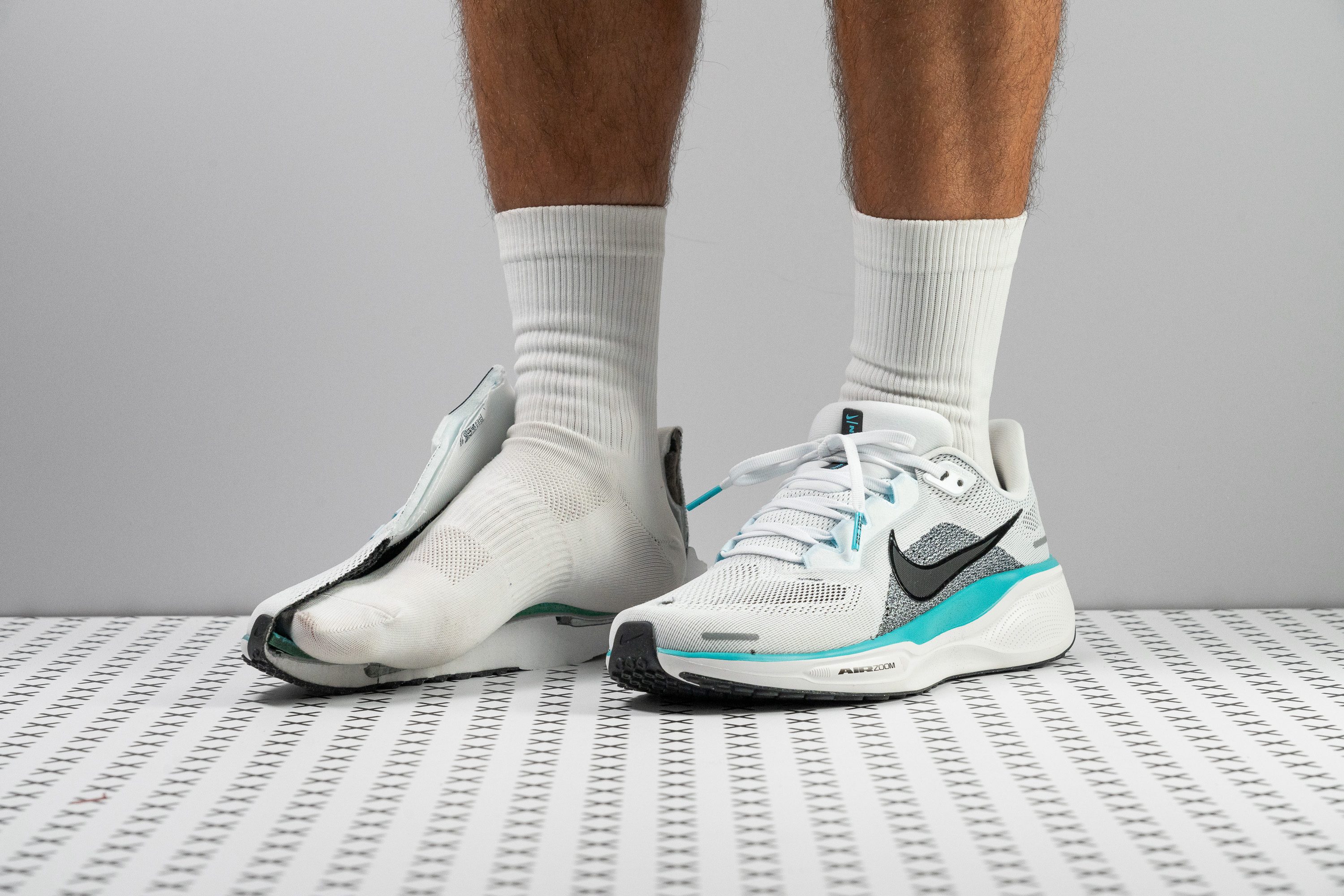

























































What makes it the best?
After extensive lab and road testing, we've identified Nike’s Pegasus 41 as the ultimate daily trainer for underpronation running. A jack of all trades, it’s highly versatile for any run training. It offers the flexibility required for easy runs, long-distance comfort and stability, and a breezy upper to top it off.
The outsole sports the iconic waffle pattern for grip and features multiple grooves to allow the shoe to bend freely. Our 30-degree test confirmed it exceeds the average shoe’s flexibility by 37.3%, highlighting the natural running experience and promoting foot strength.
Turning to the midsole, its upgraded ReactX foam incorporates two Air Zoom units for responsiveness and a softer underfoot feel. Our durometer shows it’s 26.2% softer than average, delivering comfort for prolonged pavement pounding. Our caliper reveals a 33.6/22.2 mm stack, which is a good blend between cushioning and ground feel. Additionally, the midsole sidewalls provide extra support by minimizing excessive movement while the rocker structure leads us forward.
The dual-layer mesh feels soft on foot and surprisingly keeps our feet fresh! Lab testing confirmed its breathability with an impressive 4/5 rating in our smoke test, while looking through our microscope revealed numerous ventilation holes.
However, it's important to note that the 11.4 mm drop in this version is more suitable for heel-strikers. Runners preferring a less pronounced drop may want to explore alternative options.
Pros
- Enhanced for heel strikers
- New ReactX foam!
- Improved breathability
- Plush upper
- Good durability
- Several stability enhancements
- Newly designed rocker and bevel
- Solid performance
- Superior lockdown
- Sustainable features
Cons
- Price increased by $10
- Worse than the v40 in cold temperatures
- Poor grip
Best race running shoes for underpronation










































































What makes it the best?
Nike Alphafly 3 exhales pure speed with its snappy ride, airy construction, and vibrant yet comfy midsole! Its support and power boosted our confidence, allowing us to fully focus on running fast, which is why it’s our top racer for underpronators.
The superior ZoomX midsole feels insanely responsive without the wobbly and sinking feeling. Its dual-density configuration ensures it ticks the boxes for comfort with its plush 18.5 HA top layer and stability with its bottom 22.0 HA layer. The support of the platform adds security even as we land unevenly.
Integrated into the midsole are the Air Pods and rigid FlyPlate for hyper-responsiveness. It ensures top speed, regardless of distance, and offers consistent energy rebound for powerful strides. Our flex test confirms the midsole is 146.4% stiffer than average.
This pair endures hot and humid days with its breezy upper receiving the highest score on our lab breathability test. Keeping things airy is its feathery weight of 7.1 oz (218g). That’s 24.4% lighter than average!
Alphafly 3 offers peak performance at an expensive price of $285. We believe it’s worth the investment, but budget-conscious buyers can explore other options.
Pros
- Remarkably lightweight despite its broad size
- Best-in-class breathability
- Excels in the marathon distance
- Repositioned Air Pods offer a better ride than the v2
- ZoomX foam delivers massive energy return
- Aids in forward momentum, especially when legs begin to fatigue
- Better than ever for 5K/10K racing
- Finally smooth transitions!
Cons
- Heel strikers might wear down the outsole quickly
- The arch could still be a challenge for some
- The sock-like tongue might not suit everyone
Underpronation running shoes with the best shock absorption
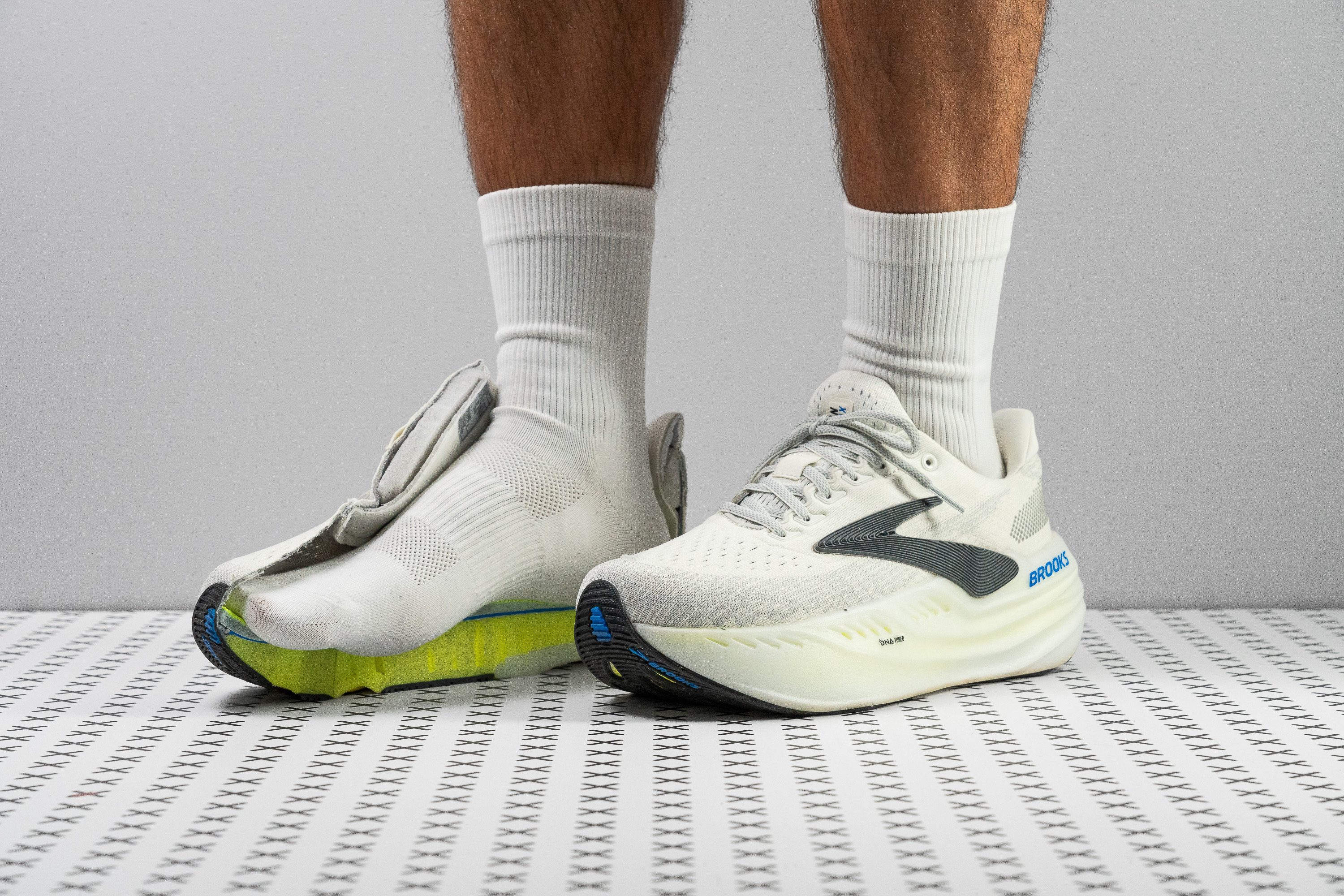

























































What makes it the best?
The Brooks Glycerin Max stands out in our lab tests and runs, setting the standard of what a comfortable trainer should be. Its mega stack hits the sweet spot of delightful comfort and support, with a plush and refreshing upper that wraps around our feet. It easily leads shock absorption among underpronation running shoes.
Our feet feel spoiled with the monstrous, above-average stack taking the stress of harsh landings away from our joints and muscles. The shoe’s height is massive at 42.3/35.7 mm, but what makes it stand out is its exceptional impact protection. With a high 148 SA score, it offers 16.5% more protection than the average.
Despite the higher stack, the shoe is unbelievably stable. It compensates for its height by stiffening the midsole. Manually assessing the shoe with our hands, we found it hard to twist, which is why we awarded it a high 4/5 torsional rigidity score.
The luxurious upper delivers impressive comfort while handling heat-intensive runs with ease. Our smoke test confirms its breathability with a maximum 5/5 rating.
However, Glycerin Max chooses comfort over performance as the midsole left us feeling uninspired. Those craving a springy ride should skip this cloudlike pair.
Pros
- Massive impact dampening
- Luxurious yet breathable upper
- New DNA Tuned midsole
- Eye-catching look
- Surprisingly stable
- Can be used as a walking shoe
- Premium materials
Cons
- Too heavy
- Midsole lacks bounce
- Poor rubber coverage
- High price tag
Best budget underpronation running shoes
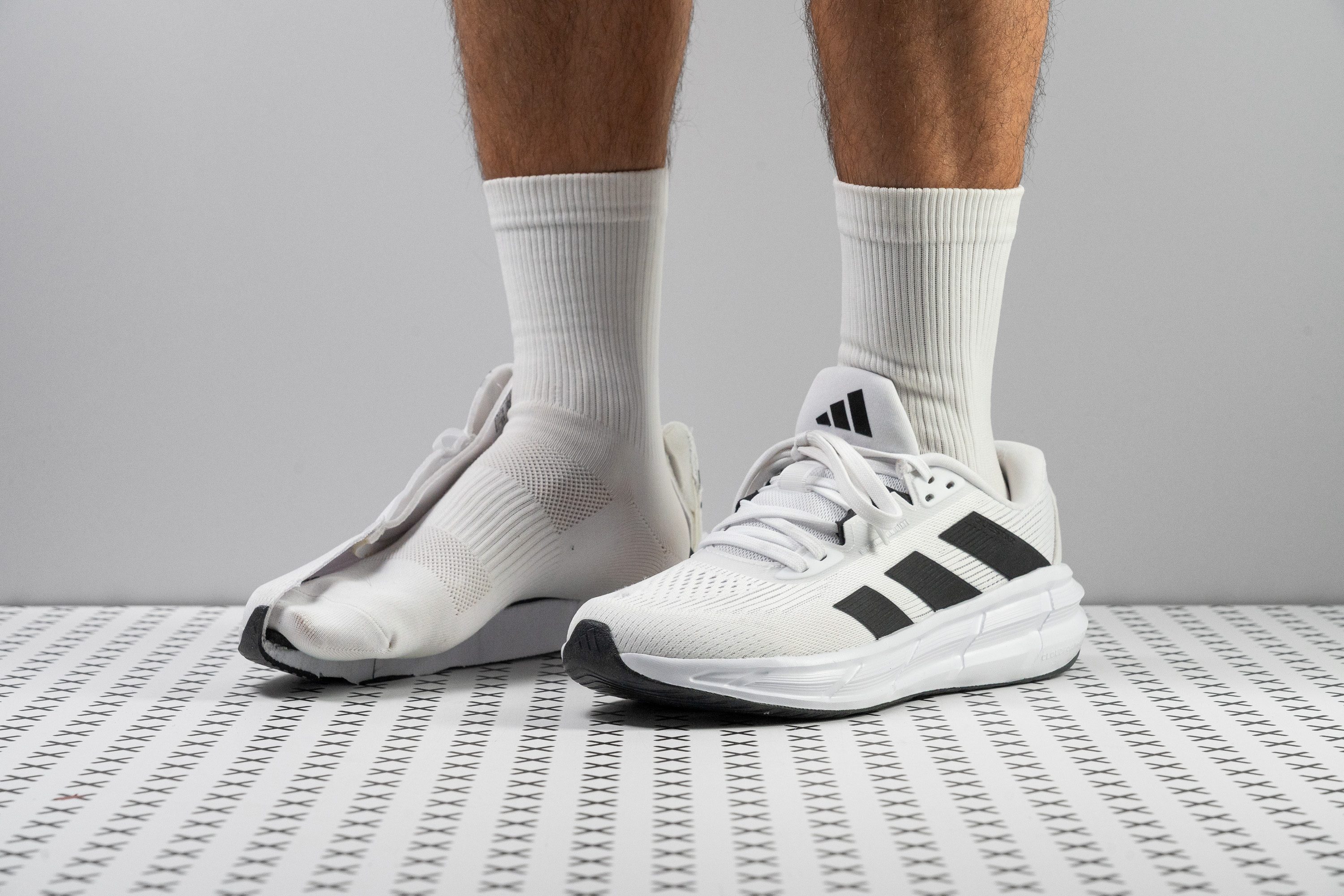












































What makes it the best?
The Adidas Questar 3 redefines an affordable shoe by delivering versatility and durability without the premium price tag. As we’ve seen in our runs and lab trials, it’s a flexible yet stable all-around shoe that's sturdy enough for long miles. It comes at a sweet 75 bucks, making it a no-brainer top budget pick for underpronation runners.
Its price tag falls below the $146 average cost of daily trainers. Its low price comes with high flexibility, proving itself 5.3% more pliable than average in our bend test. The result is a nimble ride that makes it easy to pick up the pace, as our streets came to witness.
When it comes to lateral movements and ankle twists, the midsole is not so forgiving, evidenced by its maximum 5/5 torsional rigidity score. Together with its stiff heel counter (4/5), our feet were locked in and centered, enhancing the shoe’s stability.
We’re immensely impressed with the reliable outsole, which remains untouched after endless miles. Questar 3 showed 20.0% less damage than the average rubber in our Dremel test, ensuring it lasts brutal training sessions.
For runners seeking a highly cushioned sensation for long distances, this shoe is not for you. We recommend finding other trainers with a higher stack and better shock absorption.
Pros
- Amazing value for money
- Excellent durability from heel to toe
- Breathable upper
- Stable ride
- Comfortable fit
- Great for casual wear too
- Ideal for heel strikers
Cons
- Rigid build
- Needs to lose some weight
- Subpar grip
Is underpronation bad
It’s not. It’s normal, but it just happens that a minority of runners underpronate. Most of them overpronate.
There’s:
- Overpronation or excessive inward rolling of the ankle
- neutral pronation, and
- underpronation or supination, where the ankle rolls outside, and runners tend to use the outer side of the feet (and footwear) more.
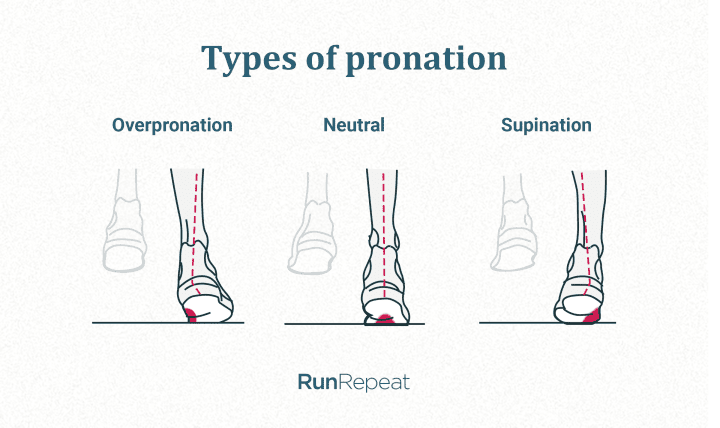
Neither of these are bad. Especially if you’re pain-free and experiencing no discomfort.
However, if you are in pain or discomfort, it’s best to visit a biomechanics specialist or a podiatrist for a proper exam and assessment. They can recommend further action, such as exercises, physiotherapy, orthotics, etc.
In case you want to dig deep into the topic of pronation, we recommend reading our guide Pronation 101: Running Shoe Choices, DIY Analysis, Injuries.
How to determine your pronation at home
It’s important to understand that this test is not nearly as accurate as the one that a specialist would do. However, if you insist on testing the pronation at home, we recommend doing a wet test.
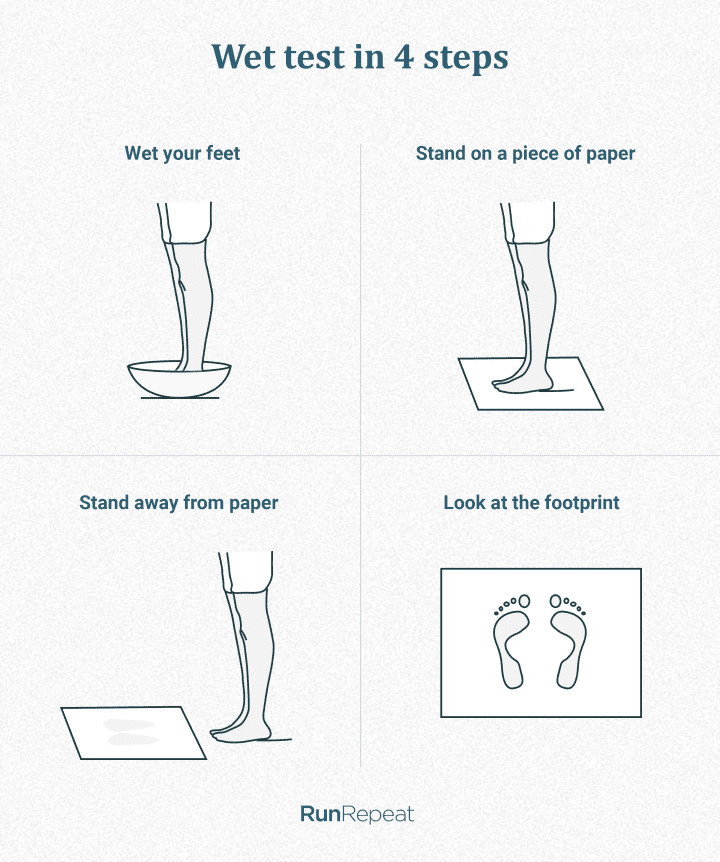
Depending on the result, you can see which type of pronation you are experiencing.
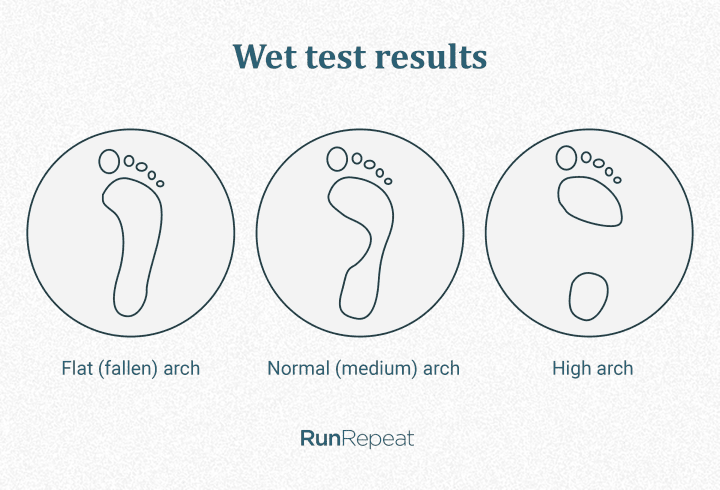
When it comes to running shoes:
- Runners who underpronate (supinate) and have neutral pronation use neutral running shoes
- Runners who overpronate use stability running shoes
There are some exceptions of course, where neutral runners appreciate mild stability, especially at longer distances, or runners with severe overpronation who use orthotics and stability or motion control shoes.
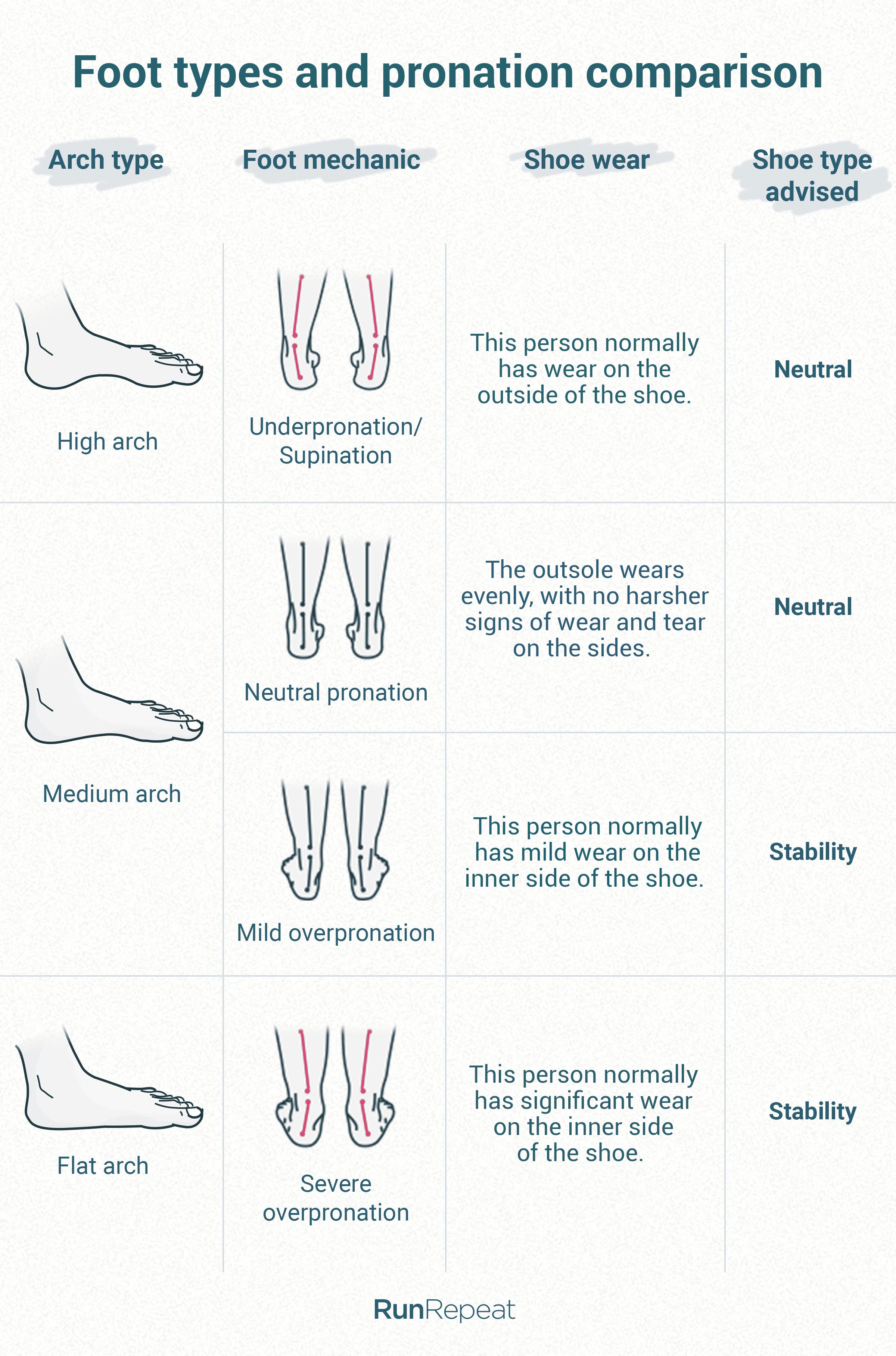
Underpronation running shoes: 5 features to look for
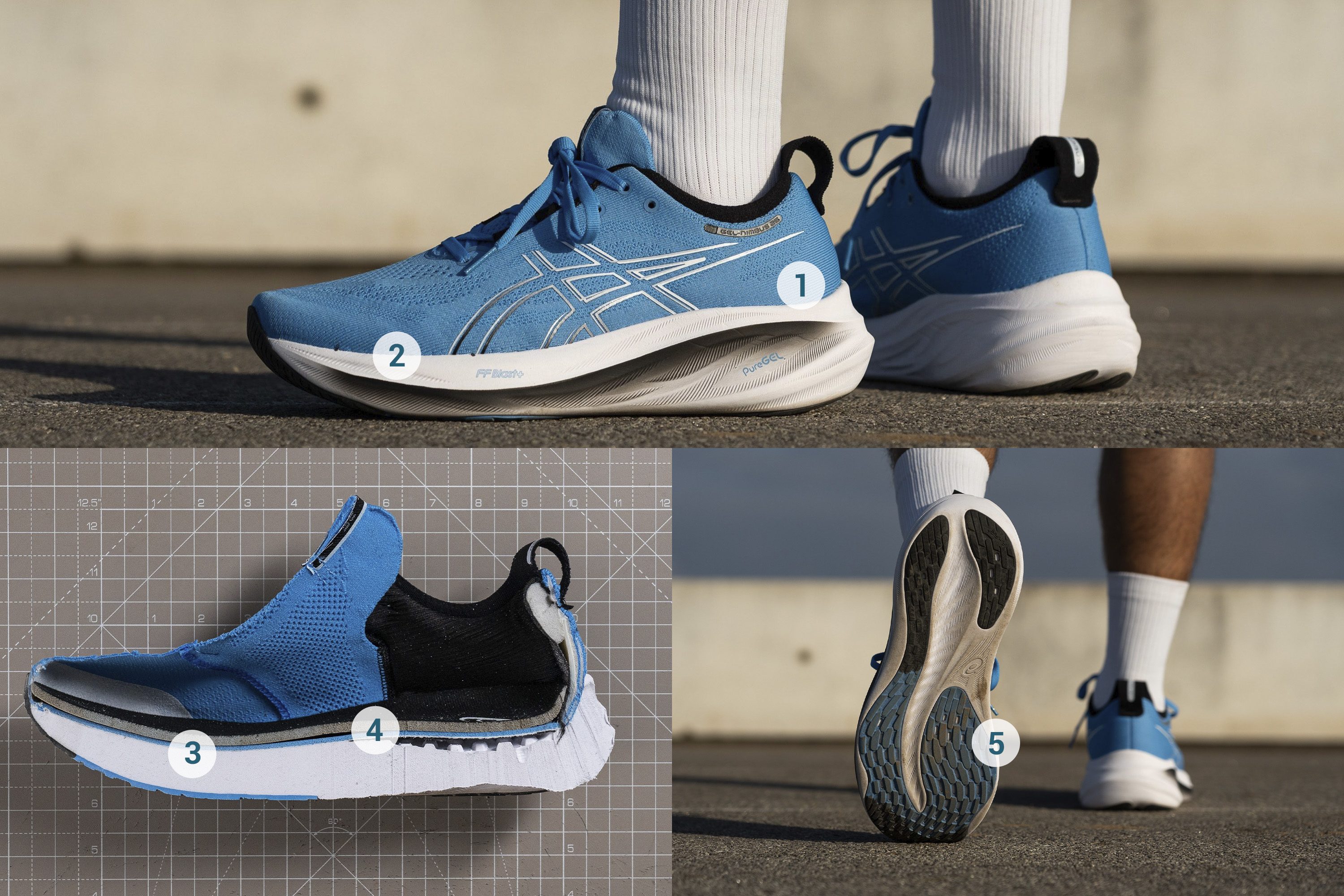
Given that underpronators usually land on the forefoot and wear neutral shoes, we suggest paying attention to these 5 things when looking for new shoes:
- How much cushioning there is? Best not to start with minimalist shoes. Less experienced runners are advised to use more cushioned shoes at the beginning. Feeling the ground is nice but it can also come with premature foot fatigue if you’re not experienced enough.
- We want a cushioned forefoot with good impact protection. This means it should have a moderate-to-high shock absorption!
- Heel drop that falls into the low (1-4mm) or mid category (5-8mm) is great for underpronators. Especially the mid-category if just starting to run.
- People who overpronate tend to enjoy arch support that comes in the shape of a medial post (plastic or foam) or simply firmer foams under their arches. Underpronators don’t need that.
- Durable and grippy outsole at the front.
We will cover each of these features in greater detail below.
Cushioned forefoot is the best in underpronation running shoes
It’s not just about choosing shoes that are not minimalist, but finding the right a) amount of cushioning and b) great shock absorption. Let’s dive in.
Stack heights
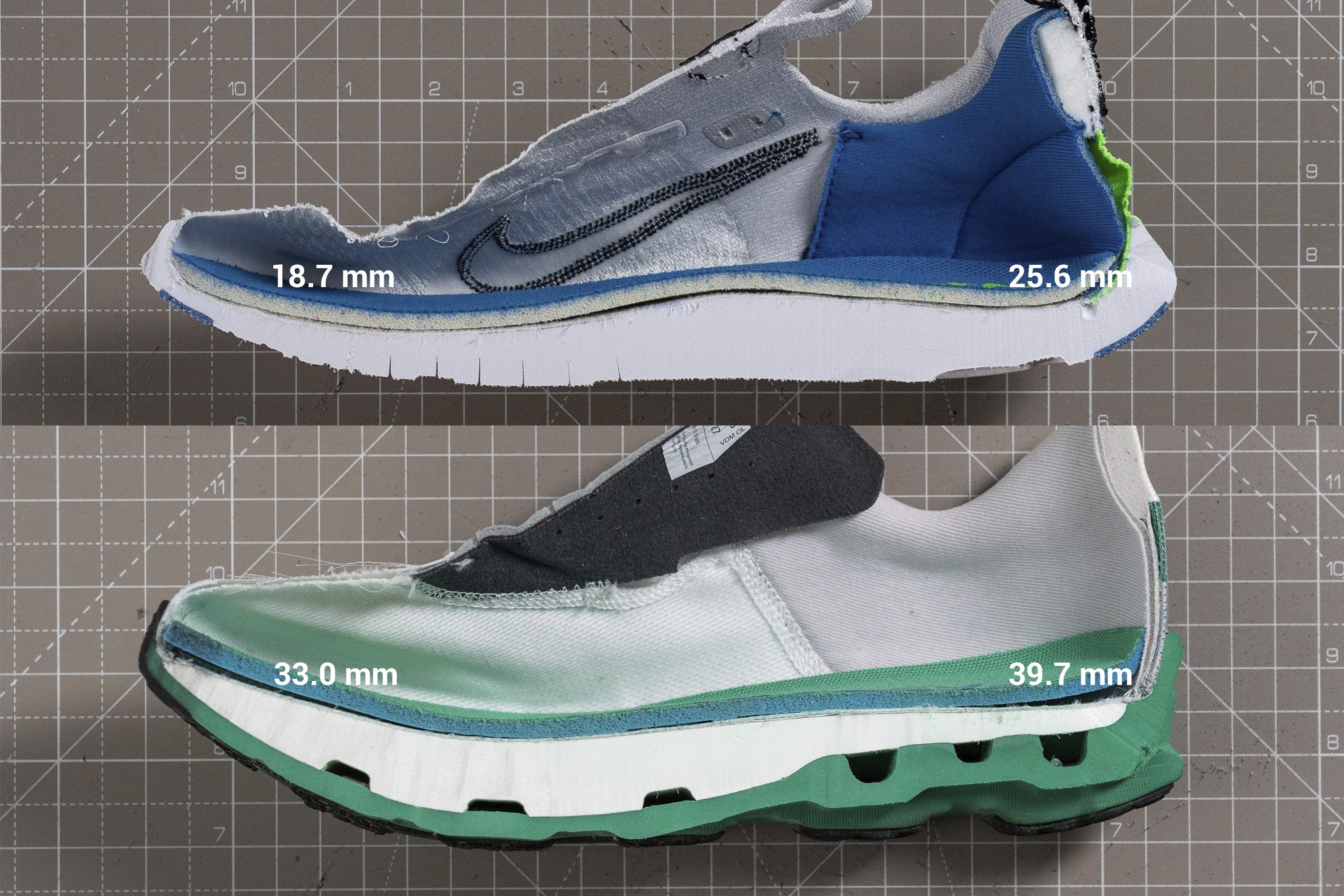
We always cut the shoes in half to be able to accurately measure the stack heights and foam softness. Using a digital caliper we measure the heel stack height (at 12% of the internal length of the shoe) and the forefoot height (at 75% of the internal length of the shoe).
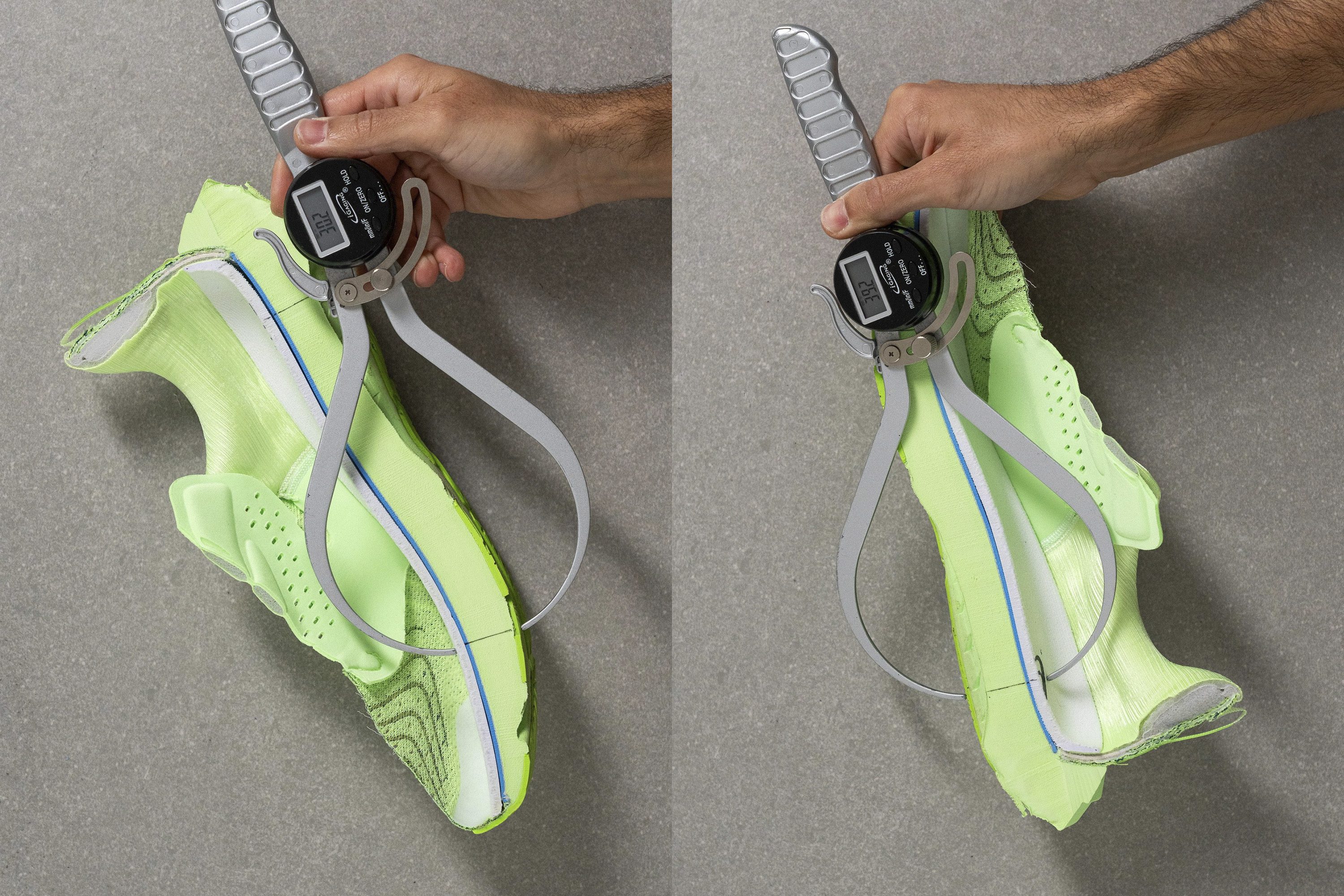
Knowing the stack heights is good when you want to avoid some extremes, like barefoot/minimalist running shoes or very high-off-the-ground platforms. Performance-wise, we recommend looking at the shock absorption.
Shock absorption
This feature tells us how good the midsole is at absorbing the impact forces and it's the job that the midsole does every time you hit the ground.
Testing the shock absorption and energy return of running shoes for underpronation
The better the shock absorption (higher numbers given in SA in our test results), the less stress is sent to the legs, so it's clear why this is such an important midsole feature. In shoes with bad shock absorption, legs have to work much more which, depending on just how bad the shock absorption is, can result in foot pain or muscle fatigue.
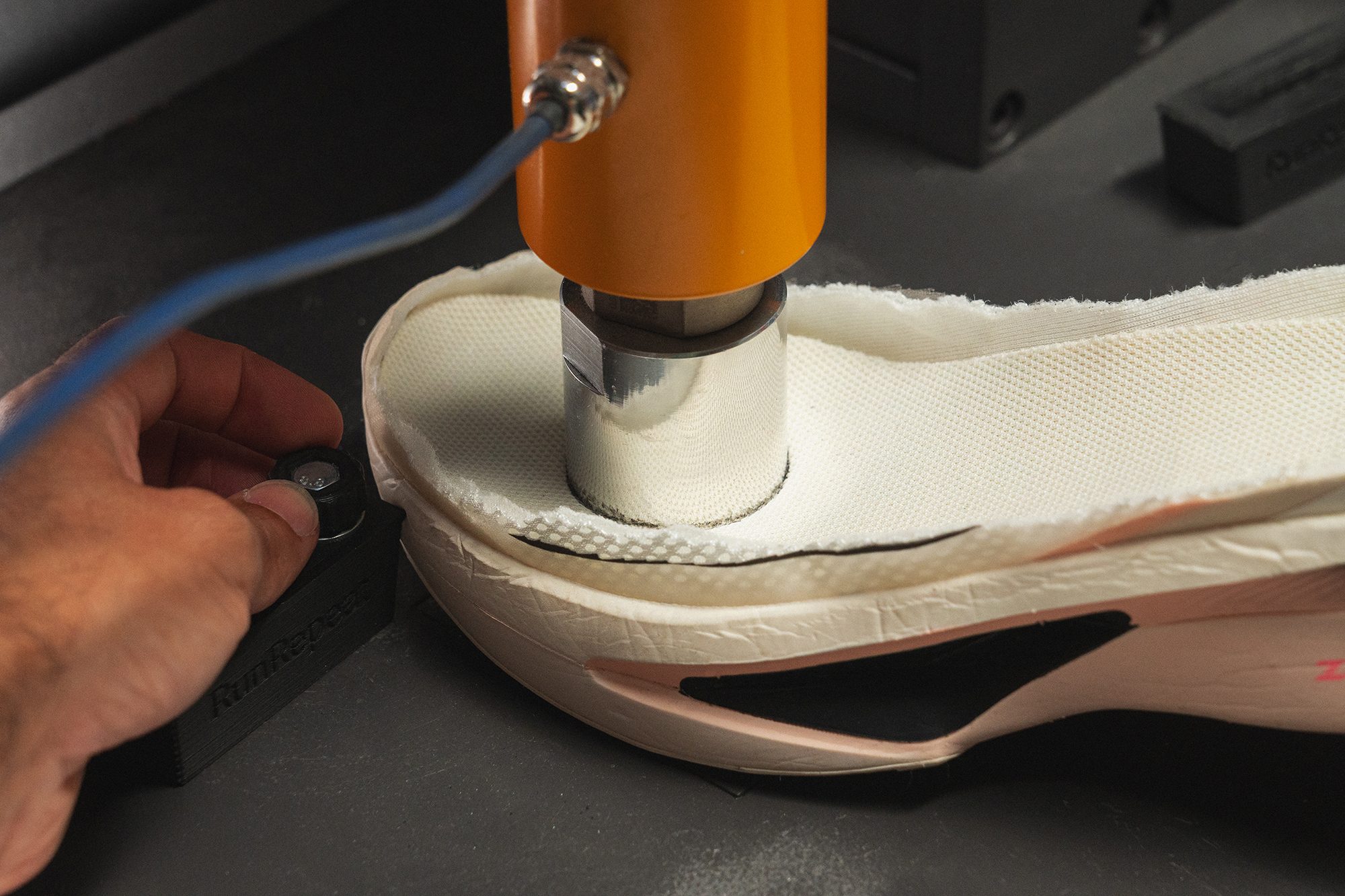
Energy return
We test energy return at the same time as shock absorption. Having good shock absorption may not be enough if the midsole is simply dull, meaning that you compress it at the landing, but it does not bounce back quickly/easily. Energy return tells us how good the midsole is at bouncing back which means how much energy it is able to return, considering that some part of it will be lost as heat and deformation.
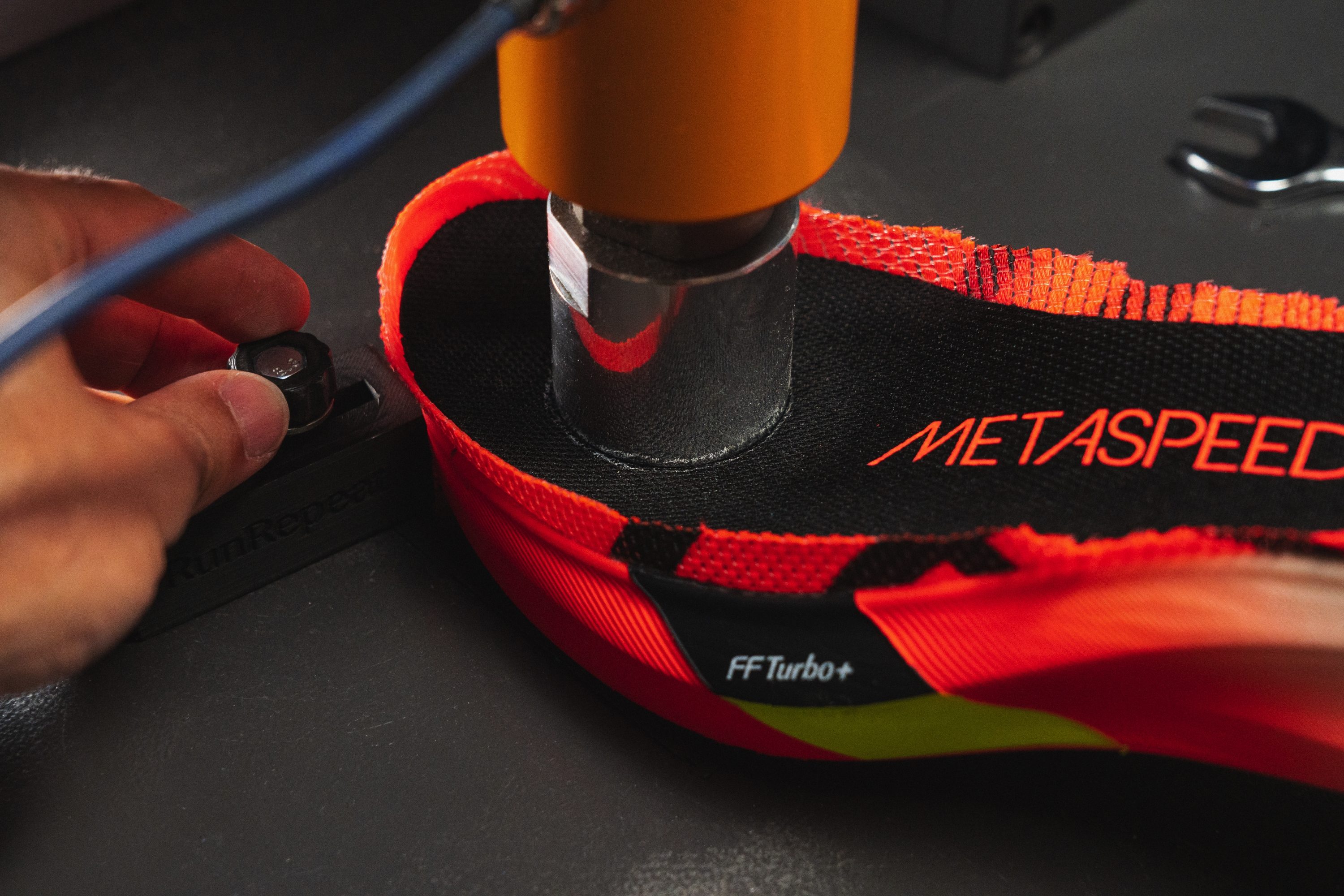
Running shoes with high energy return have a responsive, springy ride, which some may even call trampoline-like. Energy return is especially important in race shoes. In daily trainers, both energy return and shock absorption don't have to be sky-high because the focus of daily trainers lies in durability, budget-friendliness, and maybe even stability.
Why is heel drop important for underpronators
As thoroughly discussed in our in-depth guide on heel to toe drop, lower heel drops will focus on the muscles of your lower legs, and higher drops will utilize the muscles of your higher legs.
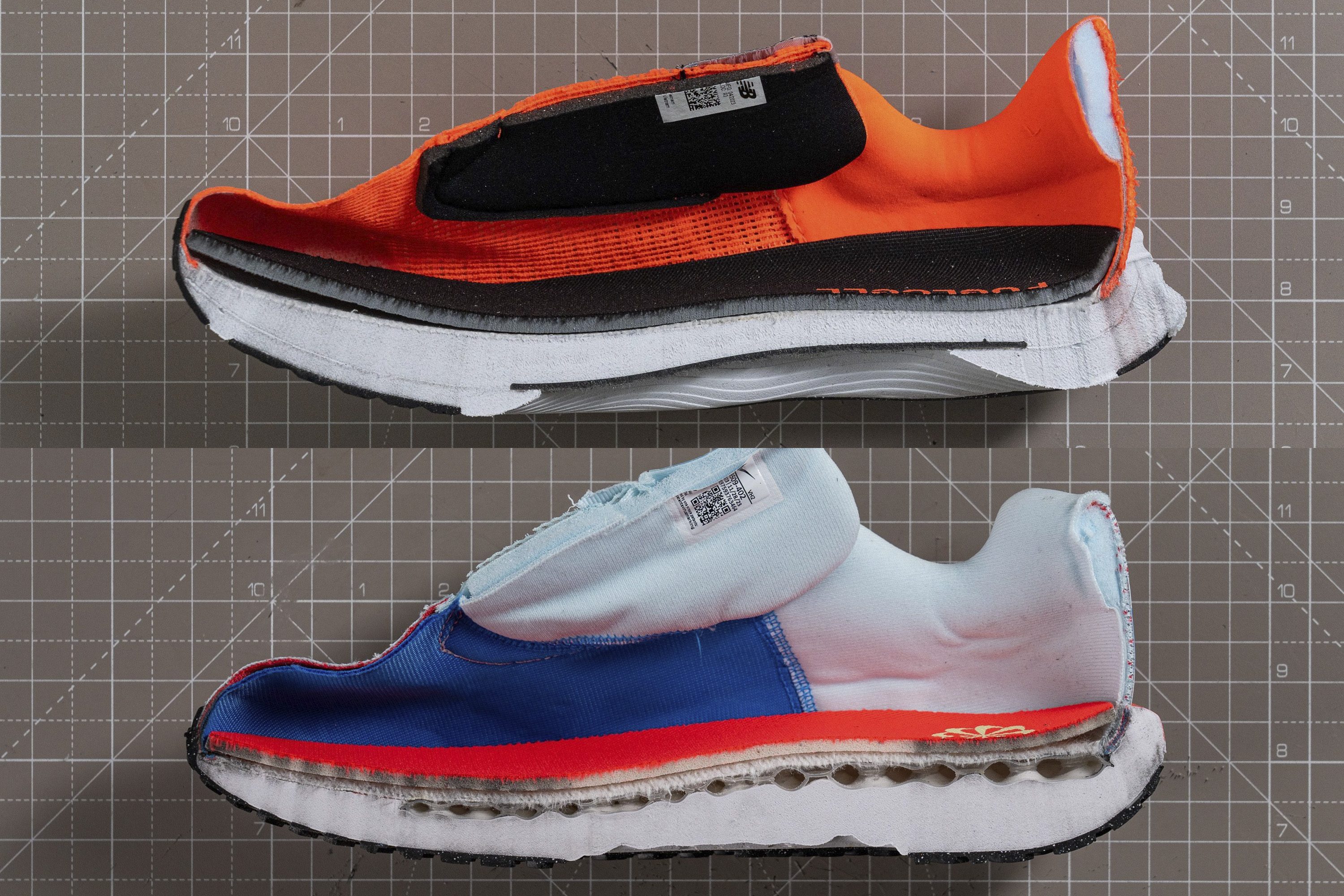
To paint a picture, zero-drop shoes ask your foot muscles to work the most, low-drop (up to 5mm) utilize your ankles, Achilles and calves the most, while high drop (10mm and higher) will put more stress on your hips.
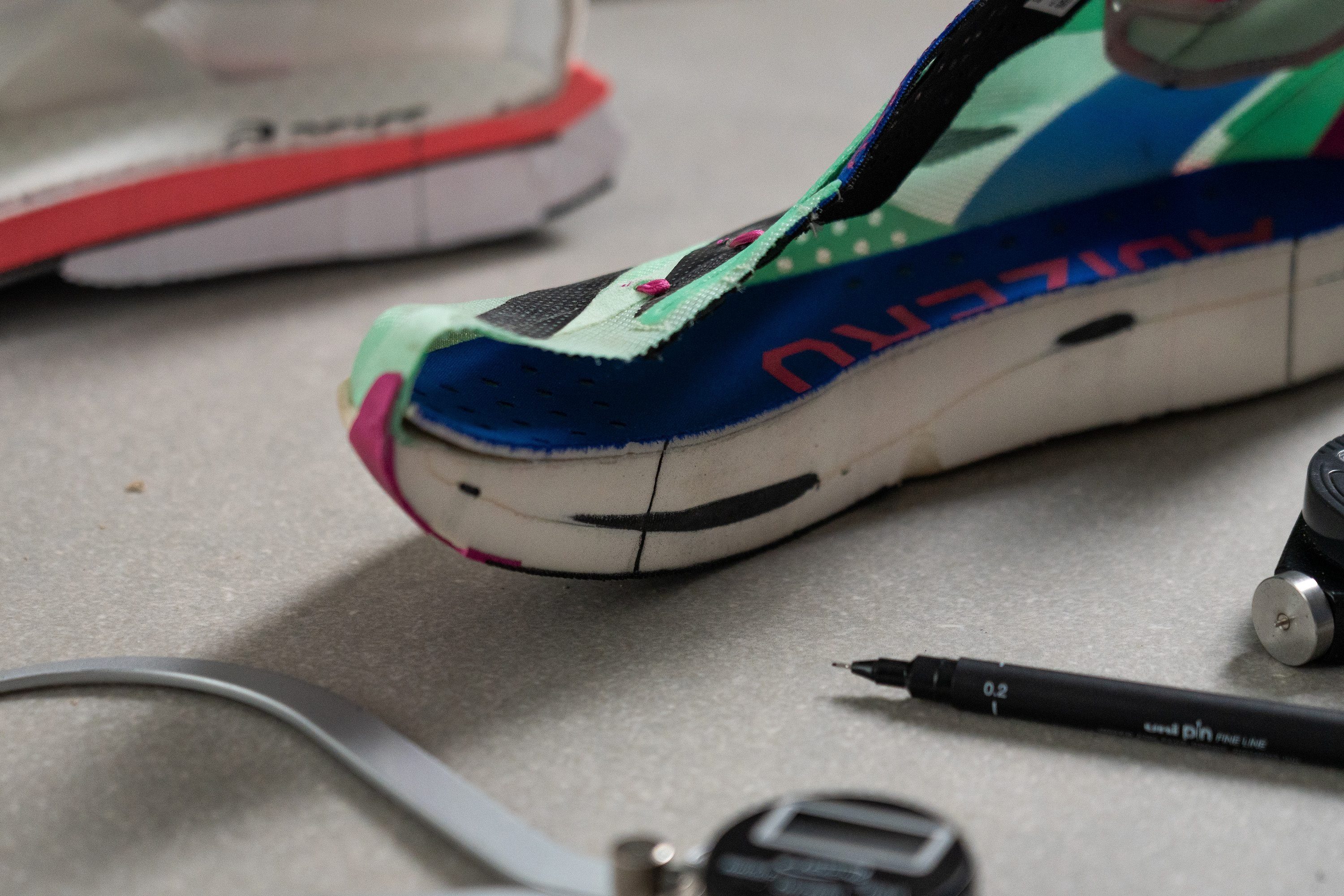
When you’re underpronating, you’re most likely forefoot striking. This means that high-drop shoes could feel chunky. We usually recommend low (1-4mm) or mid (5-9mm) heel drop for forefoot strikers.
Caution: sudden changes in heel drop (changes of 4mm and above) can result in strain, pain, or even injury. Because of this, it’s important to gradually adjust to the new heel drop.
Grippy and durable forefoot is a must
There are different outsole designs and some are footstrike-specific, meaning there are shoes that really prioritize forefoot striking (yay for you!) and there are shoes that are good-for-all. Those good-for-all ones might prioritize heel strikers, but with more foam, not with less rubber at the forefoot, because even heel strikers must do the toe-off from the forefoot.
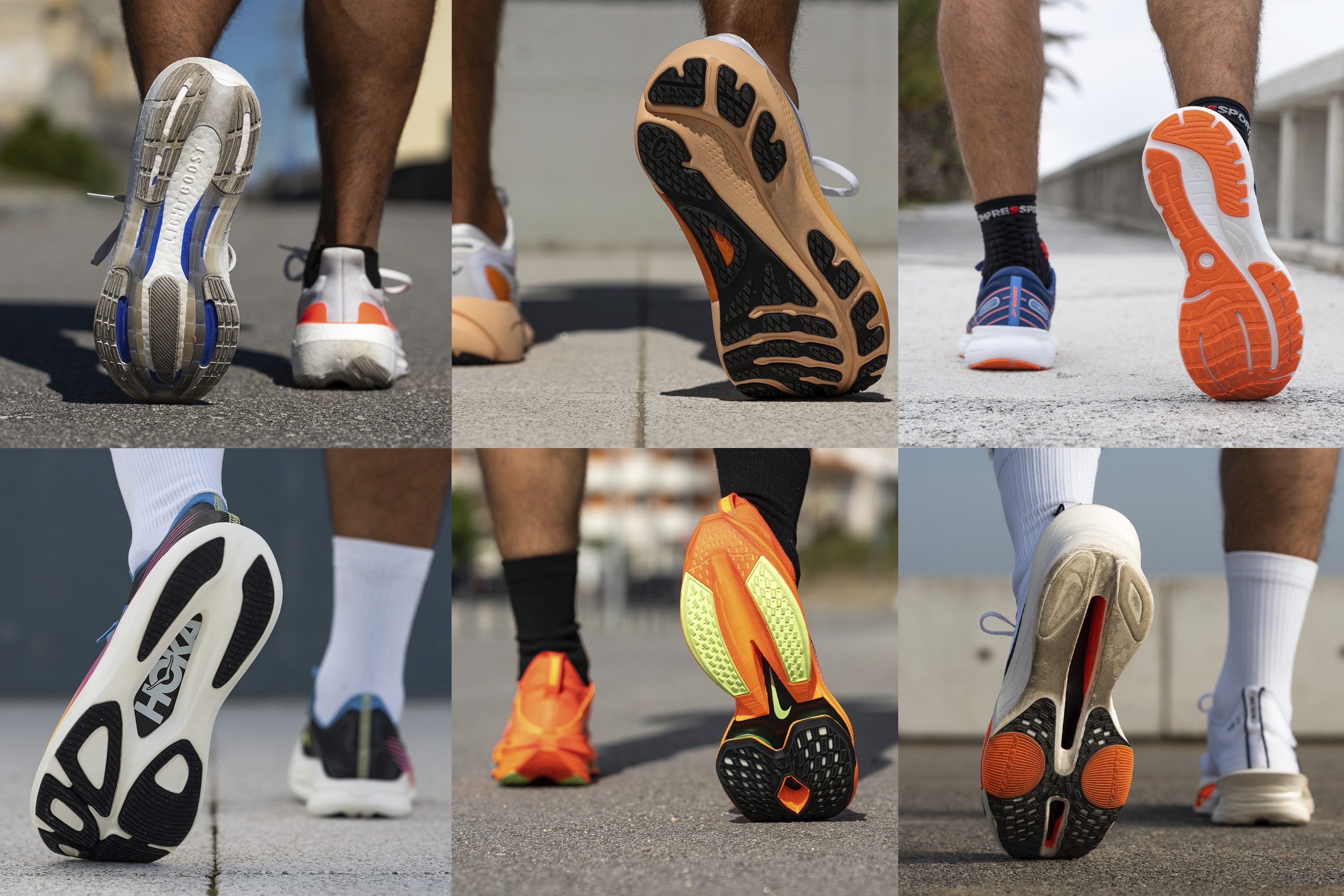
So, when it comes to the design of the outsole, you’re covered. But, what then comes into play is whether that outsole grips well (maybe you usually run in wet weather specifically) and how durable it is. Regarding the durability, we love knowing how thick the outsole is.
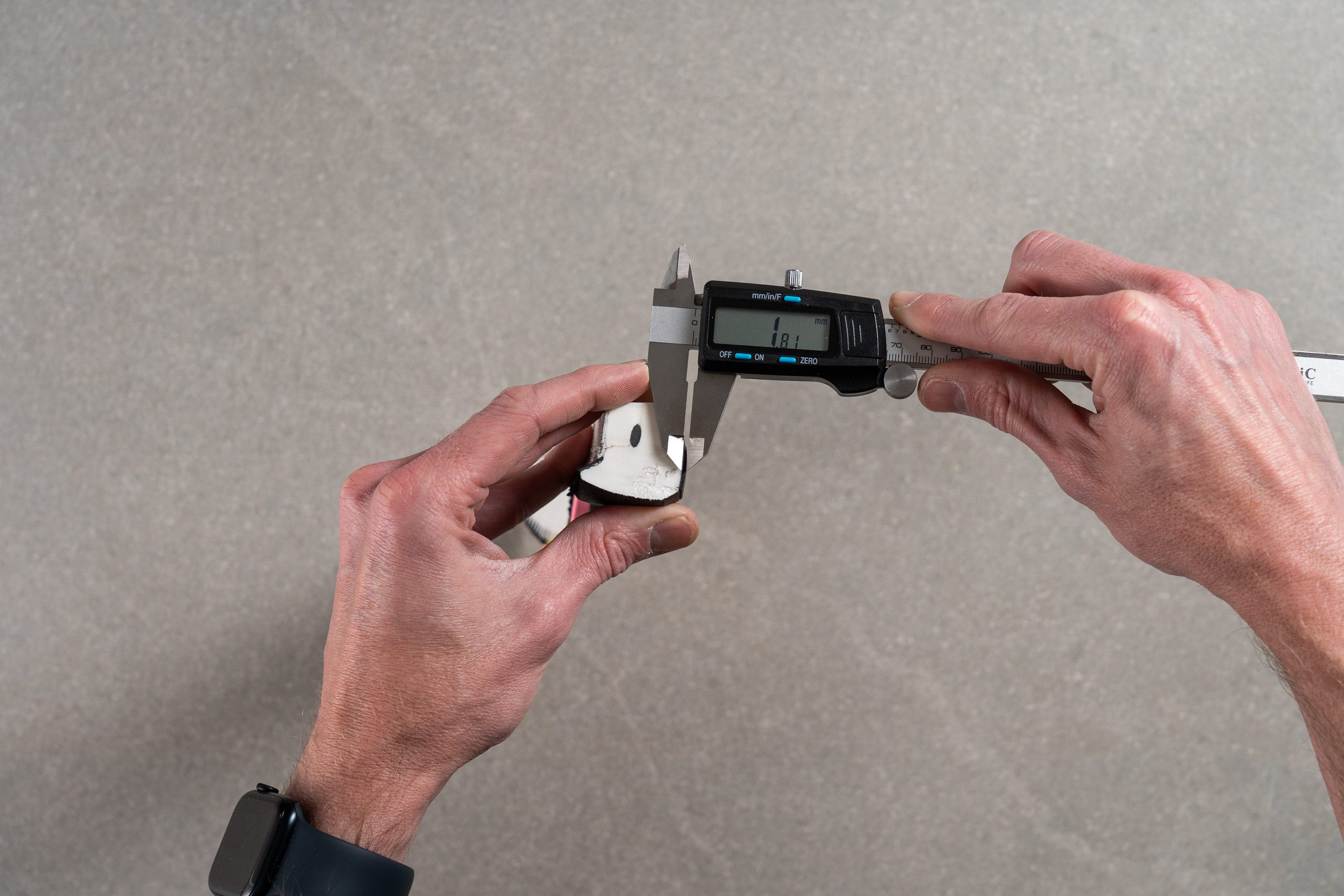
Then, we take a Dremel and perform the outsole durability test. We press it against the outsole (always the same pressure, RPM and duration) and look at the dent that appears.
Outsole durability test
Then we use a tire tread gauge to precisely measure the depth of the dent. The deeper the dent, the less durable the outsole is!
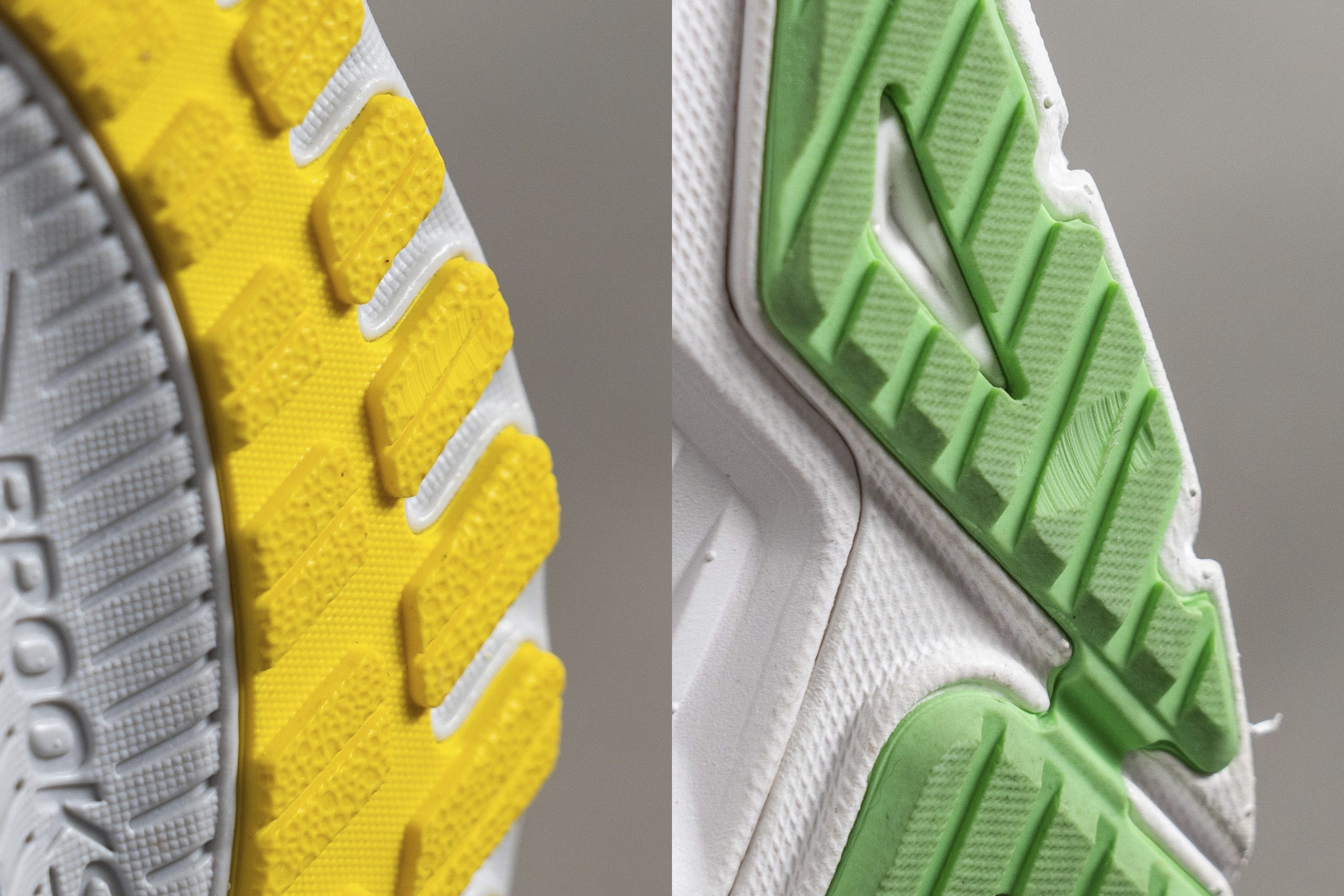
Do you need a roomy toebox?
Forefoot (and midfoot) strikers have more things going on at the forefoot, unlike heel strikers. It’s both the landing and the toe-off. So, it’s even more important not to have cramped toes.

There are many different shapes of feet and toes, and the majority of running shoes are pointy, with tapered toeboxes. The exceptions are foot-shaped running shoes and barefoot ones, as they really try to make running as natural as possible.
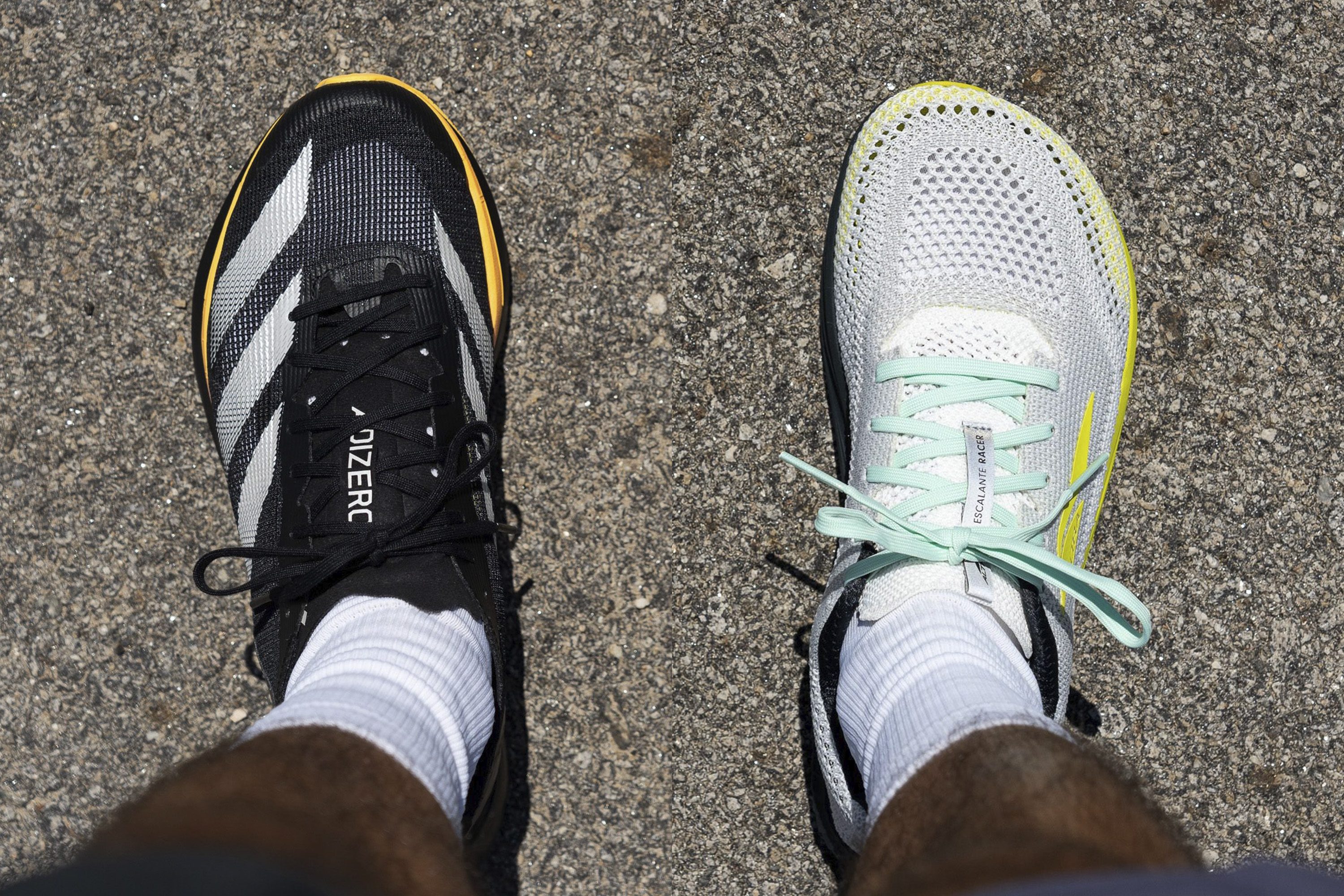
Back to the toebox design: it’s not just about the width around the ball of the foot, where the shoe is the widest, but also about the width around the big toe. The difference between these 2 widths tells us how pointy the toebox actually is.
To even start measuring, first, we have to make a gel mold of the shoe's interiors.
Then, we take our calipers and start measuring!
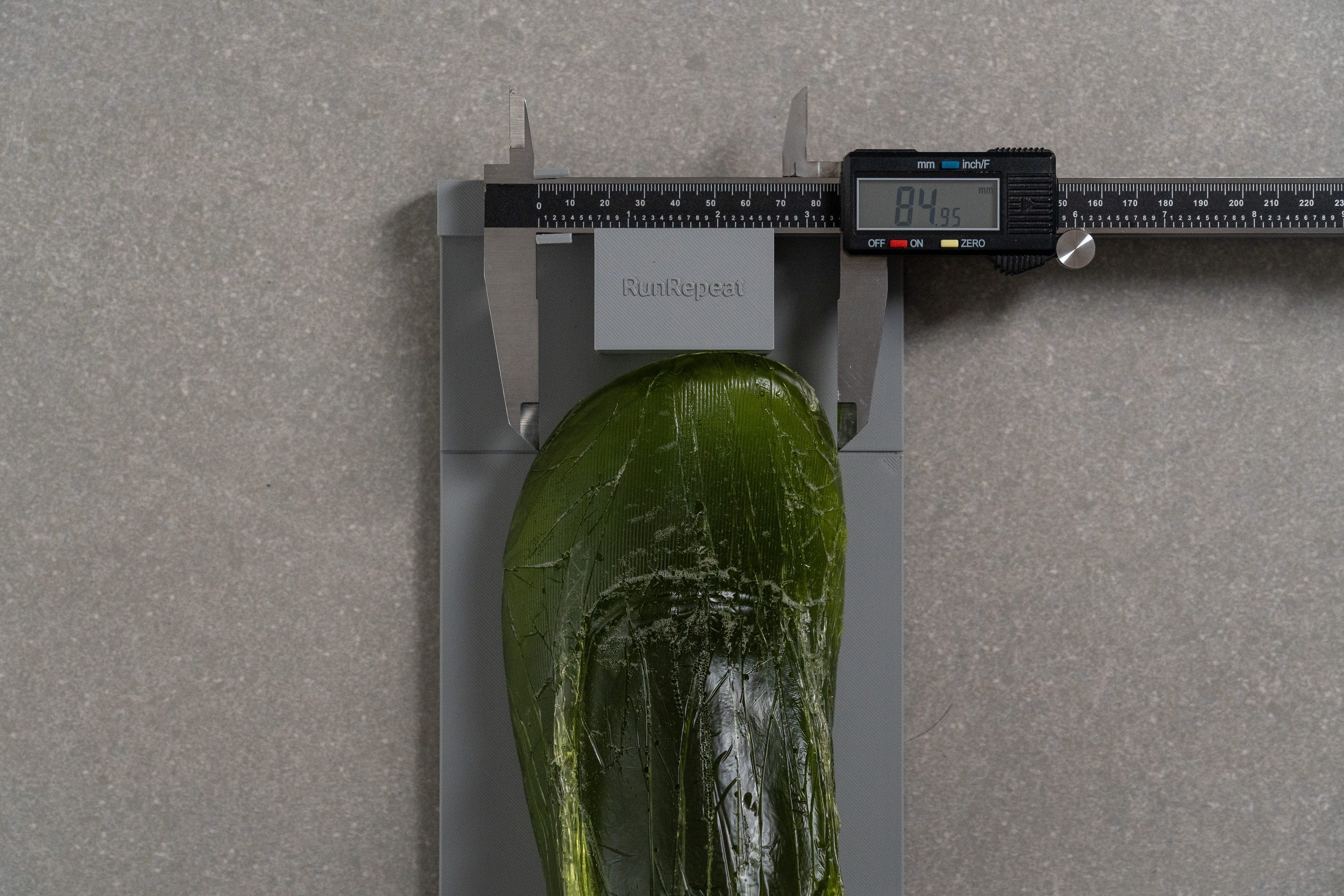
In case you have a Celtic, German, or Roman shape, here are running shoes for underpronation to consider, given that they have the widest measurements at the big toe:
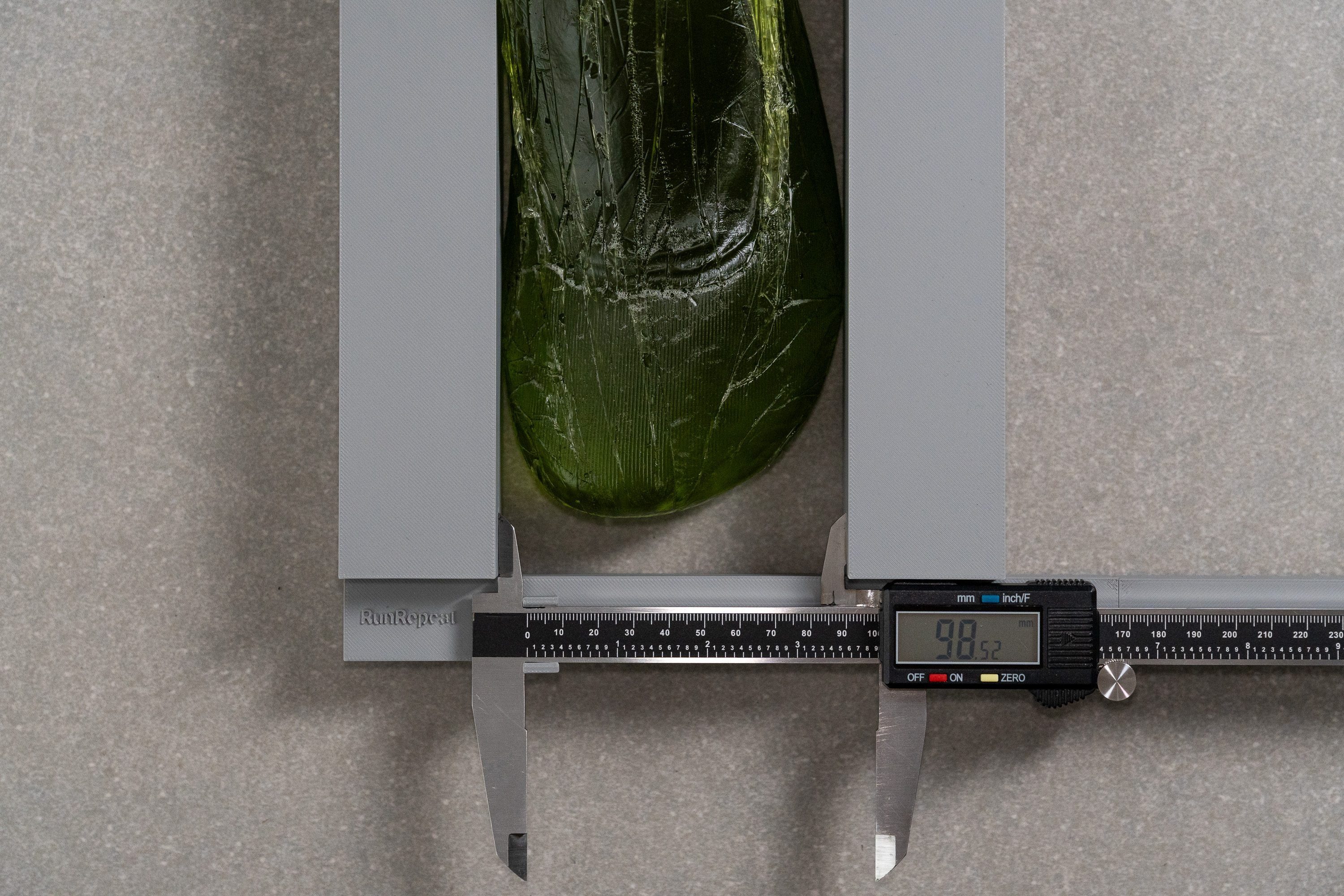
Consider these running shoes if you want to prioritize the widest part of the shoe. These lists are automatically updated with every underpronation running shoe we review!
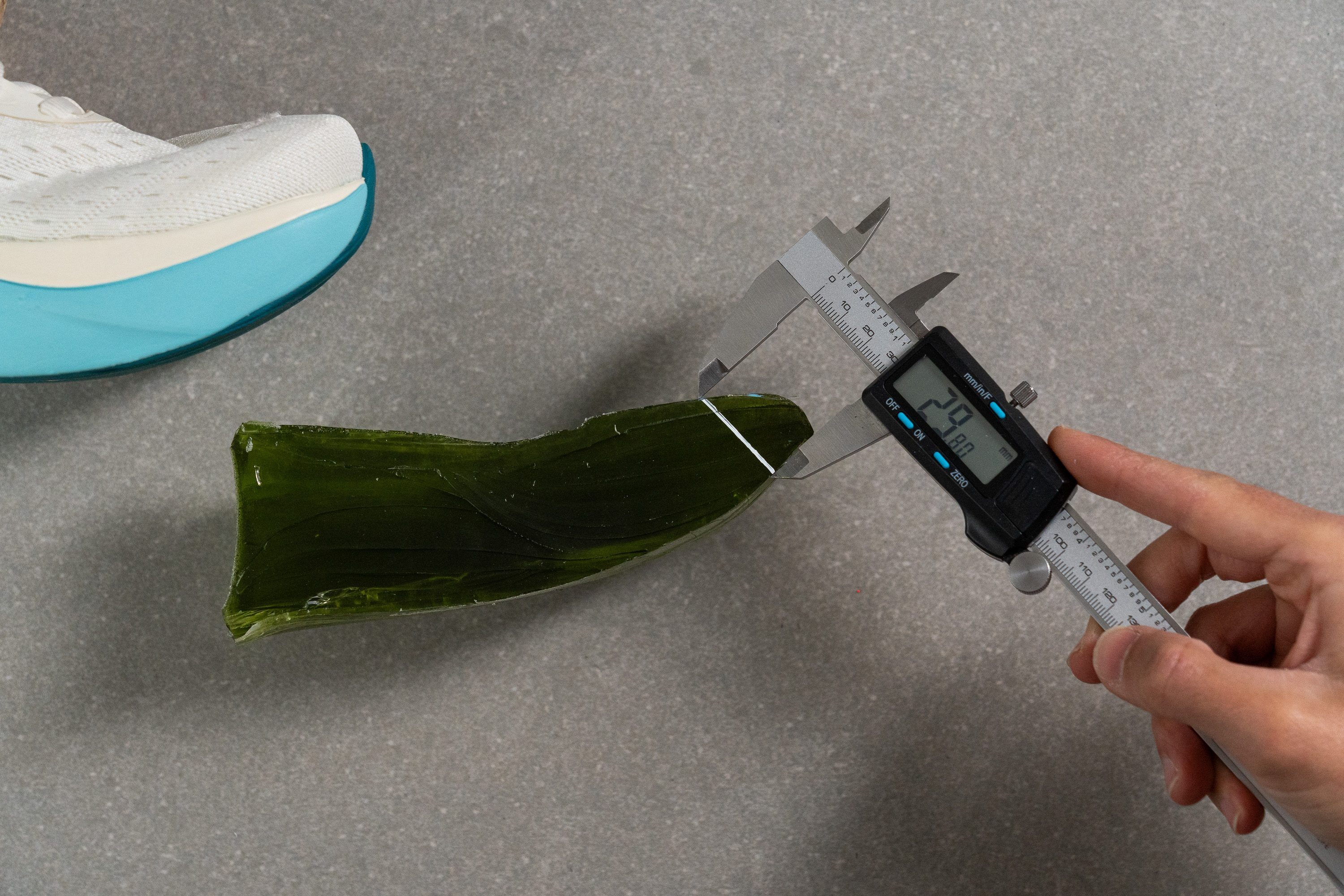
When to choose mild stability?
We’re not talking just about a stable neutral shoe. We’re talking about some stability elements that are found in stability running shoes.
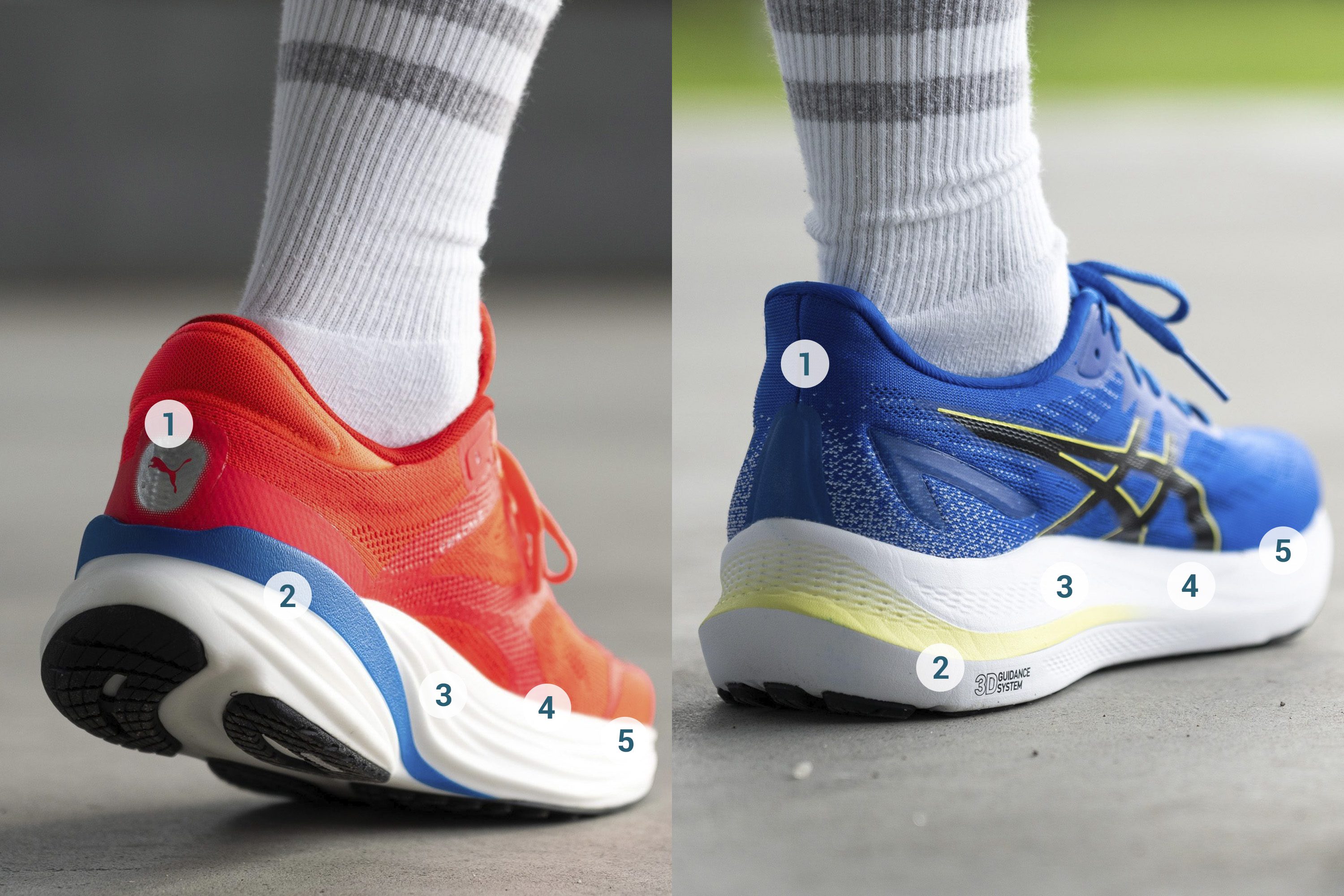
1) stability shoes tend to have stiffer heel counters 2) stability shoe has a 3D Guidance system while a neutral one has no such stability features 3) both have a wide base but neutral shoes can have them narrower 4) stability shoes tend to be stiffer and firmer 5) stability shoes often feature sole flares (midsole protrusions)
Many runners appreciate extra stability when their feet get tired. This usually happens at longer distances, like ultras. Support can come in many different shapes, be it a wider base, higher heel drop, or actually choosing a mild-stability running shoe.
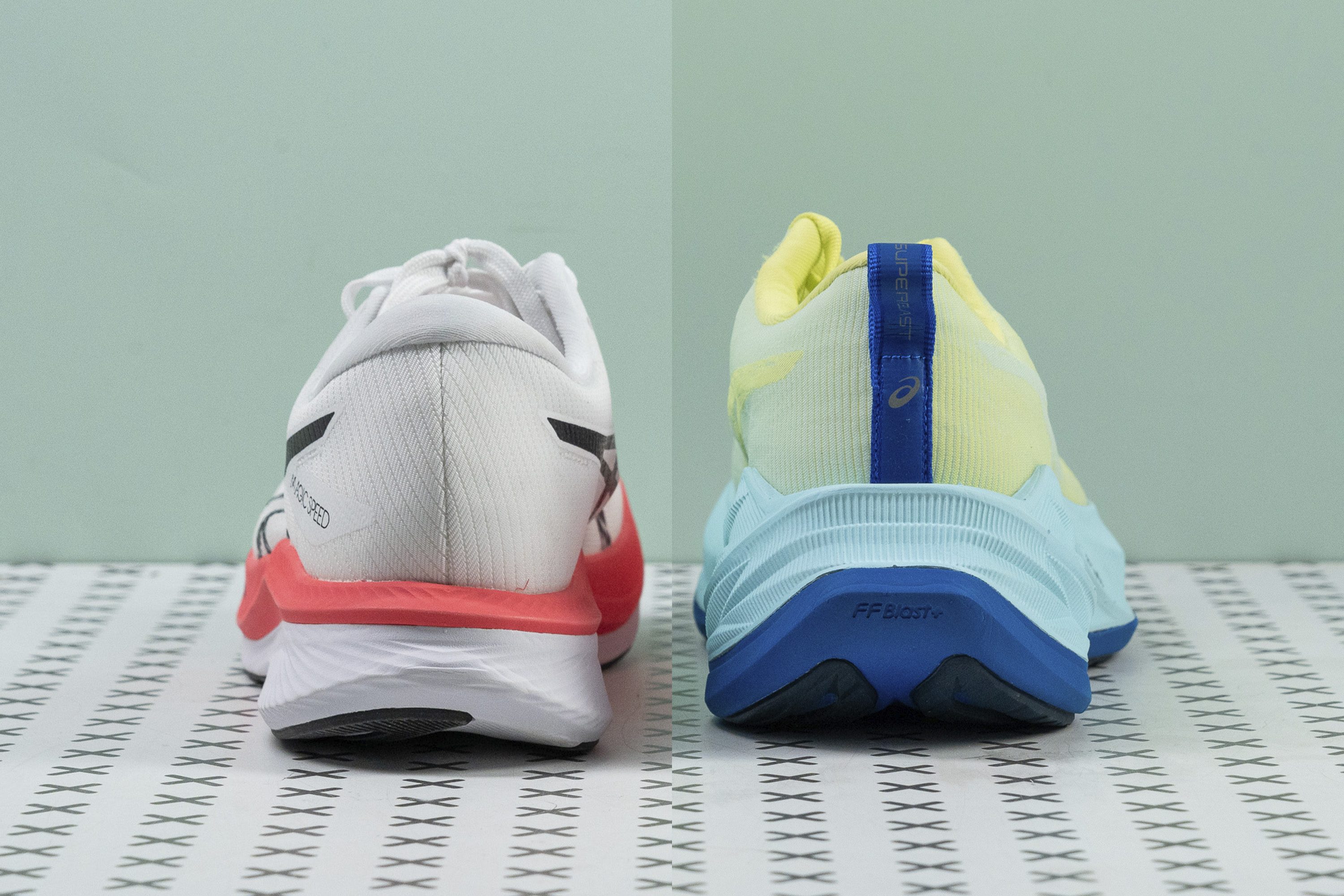
In case you think a wider base would be enough, here are underpronation running shoes with the widest base:

